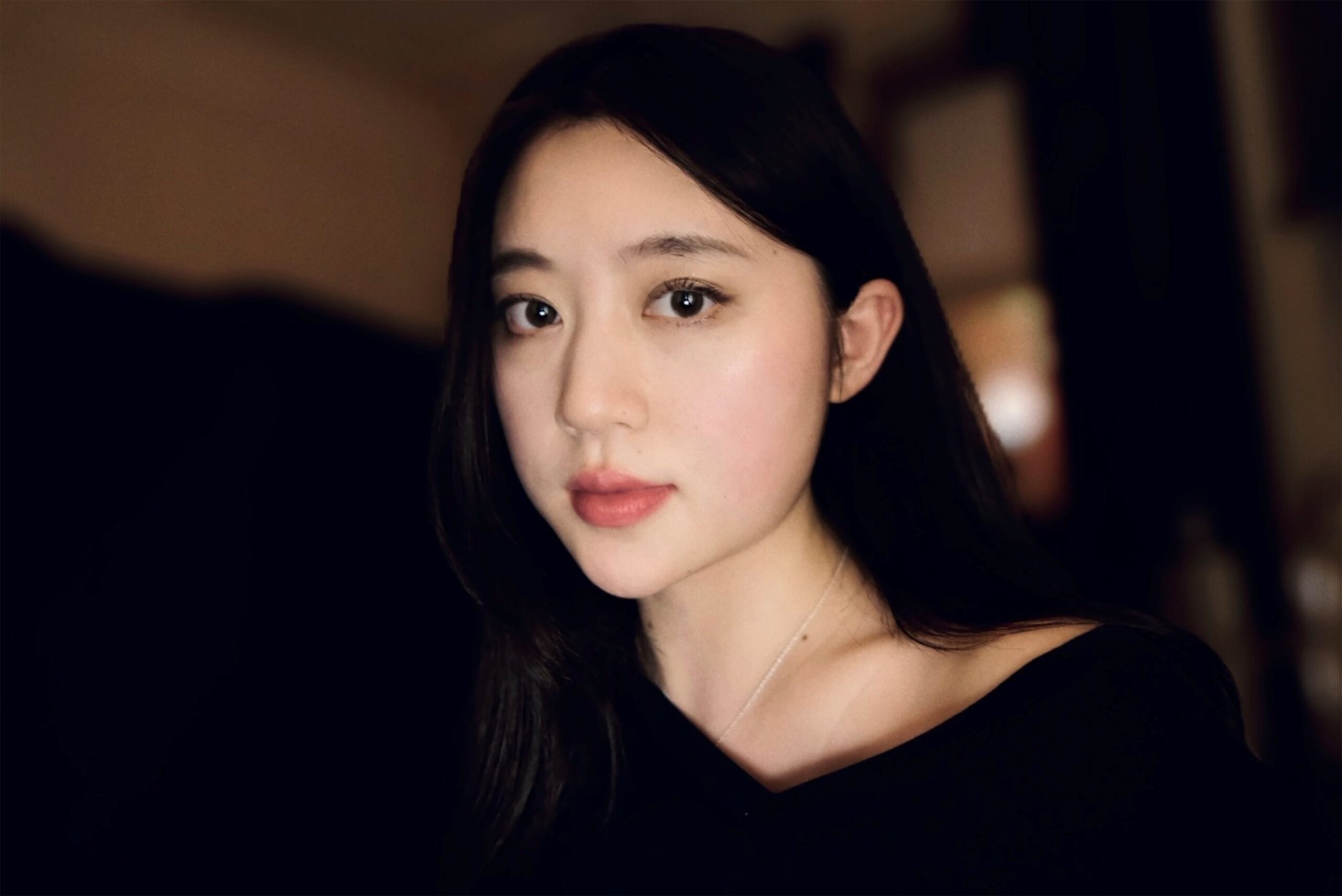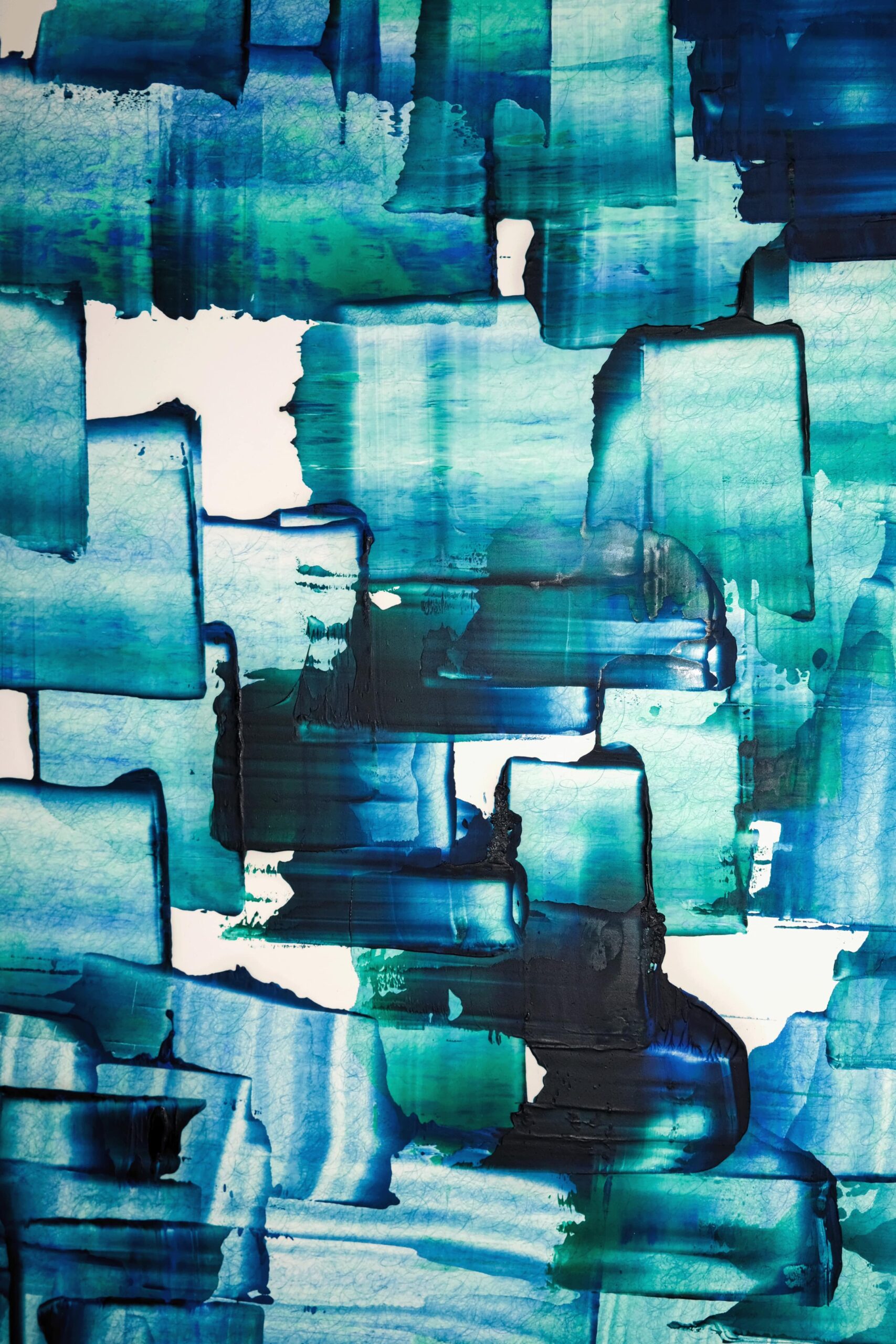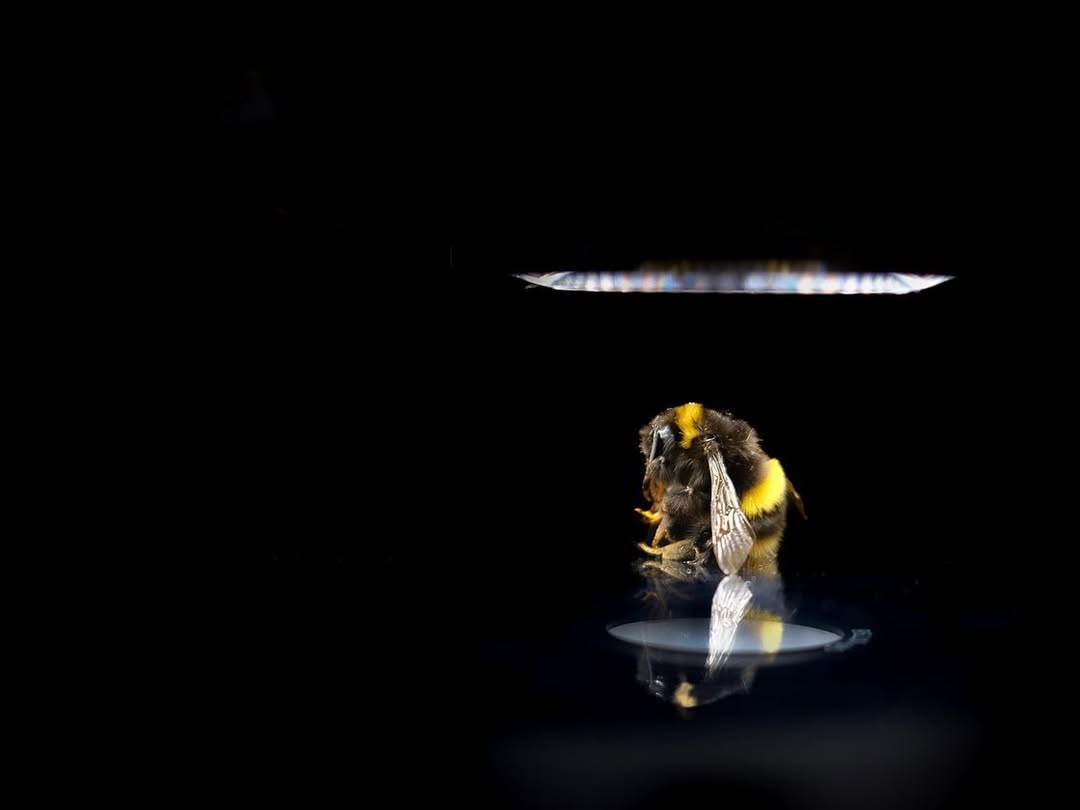Manlin Zhang’s work invites us into a liminal space, where art and science might coexist; where cognitive inquiry and the evocative language of visual expression are addressed with rigorous care. Her 2025 exhibition – Intelligence in Motion – Dreaming Butterfly and A Thoughtful Bee – presents the potential of this intersection with luminous clarity and delicacy in its contemplation of consciousness, what feels equally significant, is the congruence between intelligence and the possibilities of perception that these works explore.
Manlin is not just an artist. As a Professional Optoelectronic Engineer, with an education in Art and Science at Central Saint Martins, Manlin is uniquely positioned as an artist/researcher, situated at the remarkable intersection of empirical exploration and advancing artistry as speculative practice. The particularity of her on-ground position – which integrates scientific analytical rigor and proposed forms of creative expression – allows the rigor and criticality of her practice to emerge naturally, unfolding alongside the visual language, she integrates scientific research into her creative painting practice; The medium in which she does this – Oil on Claybord – presents an ephemeral moment that indicates the cognitive process just before intelligence identified itself through language. The collected strokes of her mark-making present a sparkly moment in cognition: a trace; a flicker that is pre-symbolic.
Her statement – “a visual trace of intelligence, before it becomes language.” – reads as a poetic manifesto towards an emerging form of scientific art. Intelligence, in this sense, is free flowing; it flows, it is living, recursive, and vibrant. Intelligence exist before logic conquers it, and before thought calcifies into categorical stasis. The brushwork in her painting captures not just subjective feeling, or computational thought, but the “between” of the two; and the biological and more-than biological.
On first glance, Intelligence in Motion – Dreaming Butterfly entices the viewer’s gaze with its luminous layers of translucent blue and green and ochre that take on broad overlapping strokes which ripple across the surface of the claybord and spark memory or connect neural pathways. The image itself – abstract in nature and organic in subject – uses the wings of a butterfly, and yet it is not just a representation. It functions as a visual echo of the fleeting nature of thought as it moves before it becomes identified with the body or mind.
The surface texture of the claybord allows oil to stay fluid and imbues tactility that evokes a sense of biological matter and micro surfaces. The way the fluids bleed out and pool evoke a sense of movement, evolution and recursion. The notion of recursion reinforces the artist’s aim to illustrate intelligence as “not yet dried, recursive and pre-symbolic.”
What is most fascinating is that multilayered perception: that what you think you are seeing is partial truth, like ants walking on a Möbius strip constrained by limitation of view. Manlin’s sweeping brushwork gestures toward that complexity of information native to the support – the unseen “topology” of reality that will never be seen through direct observation but can be articulated through all brush strokes.
The Thoughtful Bee series highlighted by proximity to bees relates back to the abstract fluidity of Dreaming Butterfly in that anchors the discourse back into biological reality – the bee as a container of multiple schemas of collective intelligence, instinct and delicate complexity is engaged in here not only as an insect but understood as a site of inquiry into what thought & awareness actually is.
In the macro close without hesitation to bee wings we are presented that wings have a quality of stained glass or biological mosaics that are static to hold water with structure and yet ethereal. This visual element encourages us to think about the complexity of natural form and function, the intelligence that is woven into the living matrix of biological systems and the subtle rhythms of animal reasoning.
We have here the bee, spinning in the black nothing, which for me creates a feeling of thought wandering from its origins; stripped of source and context, not lost – but contributing to something larger. The bee’s color in infinite black reflects a sense of both volition and wonder; how can consciousness emanate as a luminous trace in a vast unknown.
Manlin Zhang creates work that is not simply representing science, it is a philosophical inquiry into big picture thinking about the self and environment. By incorporating elements of Eastern metaphysics to cognitive science understanding, she attaches herself to traditions that explore the gulf between subject-object or observer-observed.
Her paintings, drawings, and photographs explore the frail lines that separate “thought” from “sensation,” “intelligence” from “embodiment,” and is directly in line with the current tensions present in the philosophy of mind and quantum physics where thinking about consciousness has begun to destabilize classical categories.
The butterfly and (the bee) are contemporaneous beings of transformations and workers in motion thus represent motion of intelligence itself; between form and formlessness, pattern and chaos.
From a technical standpoint, Manlin handles her various media very well. The oil on claybord she is working with is a responsive medium that behaves like a living tissue and creates surfaces that seem to have energy lying in- wait. The more subtle blacks and blues of Dreaming Butterfly create a peaceful – but impenetrable palette that draws the viewer into contemplation.
In contrast, in her photographs Manlin uses a stark black backdrop and a tool-like existence to clarify, isolate, and glorify her subjects while utilizing pinpoints of light. While the bees are represented in crystalline perfection, the juxtaposed placement of the bees in near black holes terminates the connection of physicality like a faint spiritual or cognitive essence made visible.
All of these works are conversing with one another, between abstract and realistic, between science and poetry, between microscopic and metaphysical.
Manlin Zhang is working at a cusp of a new kind of artistic territory where scientific accuracy and metaphysical speculation come together in what can be understood as discrete, yet by unique, ways of investigating the realms of intelligence and consciousness. Zhang’s Intelligence in Motion framed with the intimate and contemplative images of A Thoughtful Bee , is a deep visual exploration into what it means to think, feel, and be aware.
Zhang’s work prompts us to rethink the parameters of perception and understanding, to recognize intelligence before it has been crystallized into language and to see intellect as fluid and recursive in process. Zhang performs a formulation in which science becomes sensuous and art becomes investigation, a welcoming invitation to dwell with meaning in the glowing unknown.
This is art that interacts with not just intellect, but emotionally prompts us to be immersed and lost in the cadences of thought and sensation, to dream upon the wings of a butterfly and contemplate the wisdom contained in the stillness of a bee.
Manlin Zhang’s work powerfully serves as a clarion call toward what the future of intertwining art and science work might find itself inherited in; that the truest mystery of intelligence and consciousness ultimately lies not in declarations of possession toward knowing, but questions we deem, fundamental, worthy and worthy of investigation.



